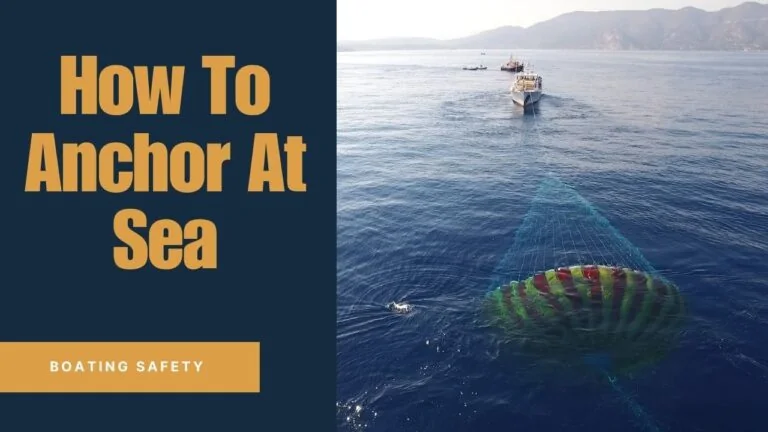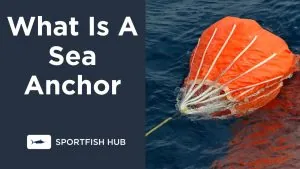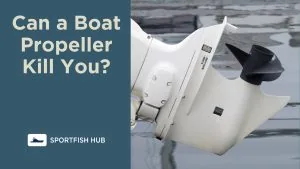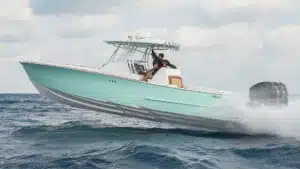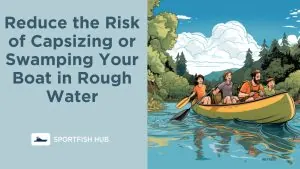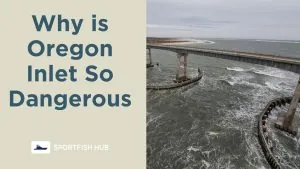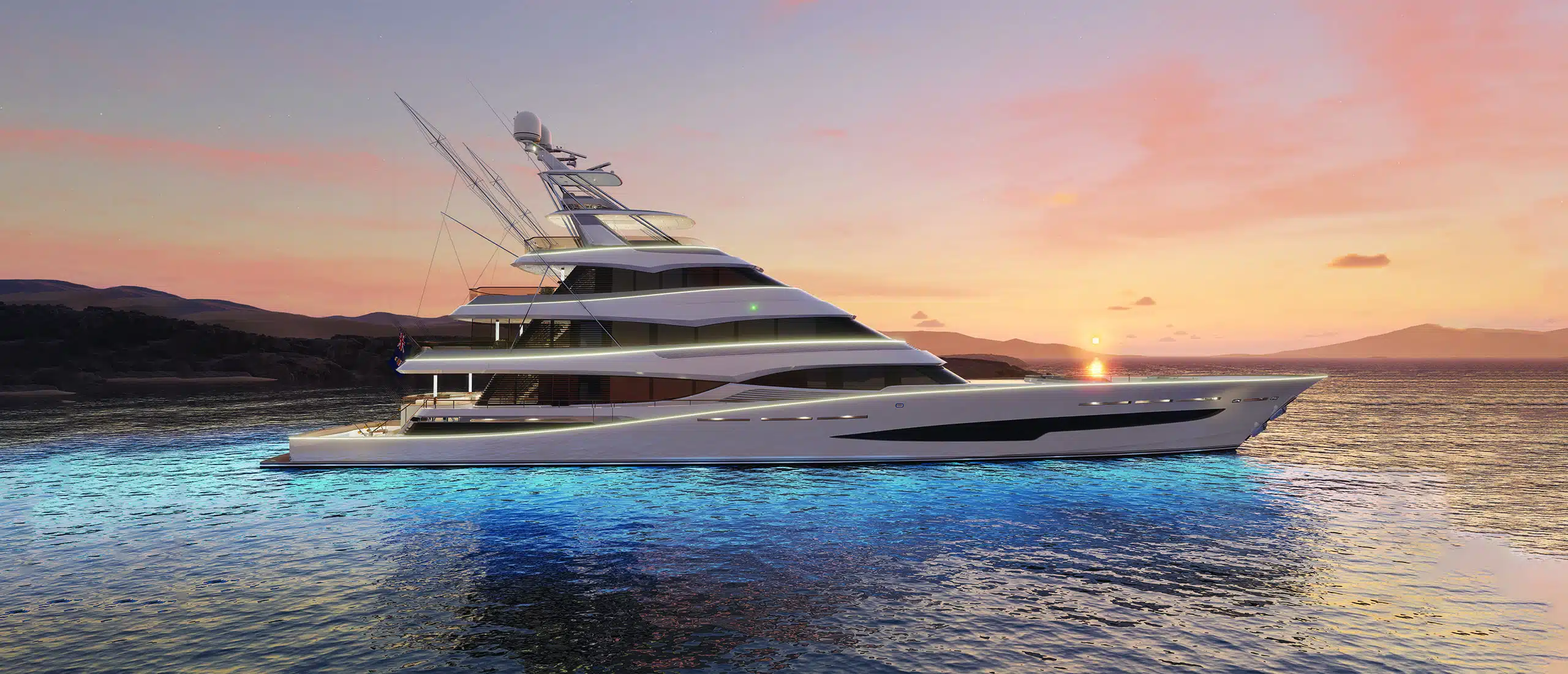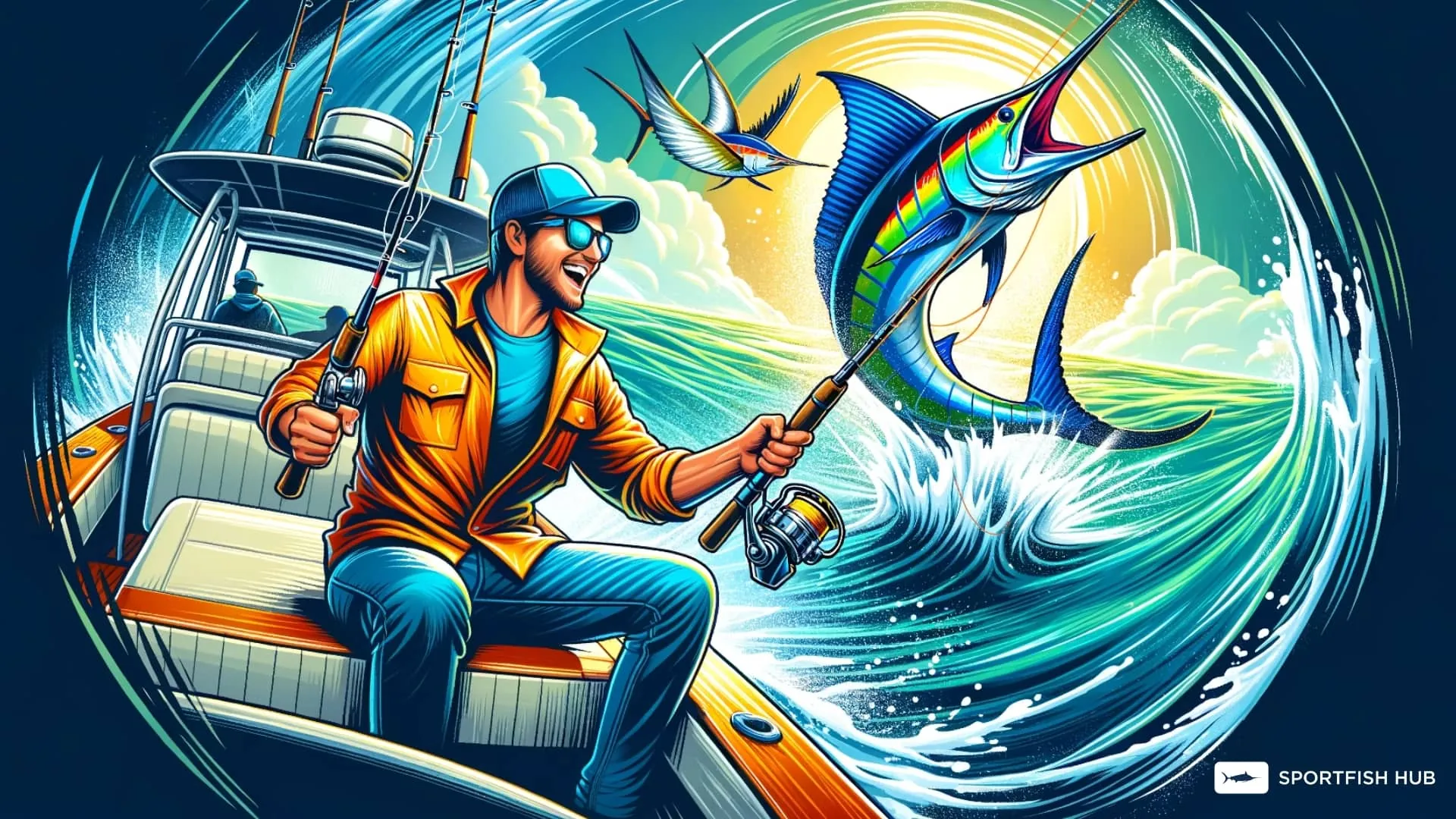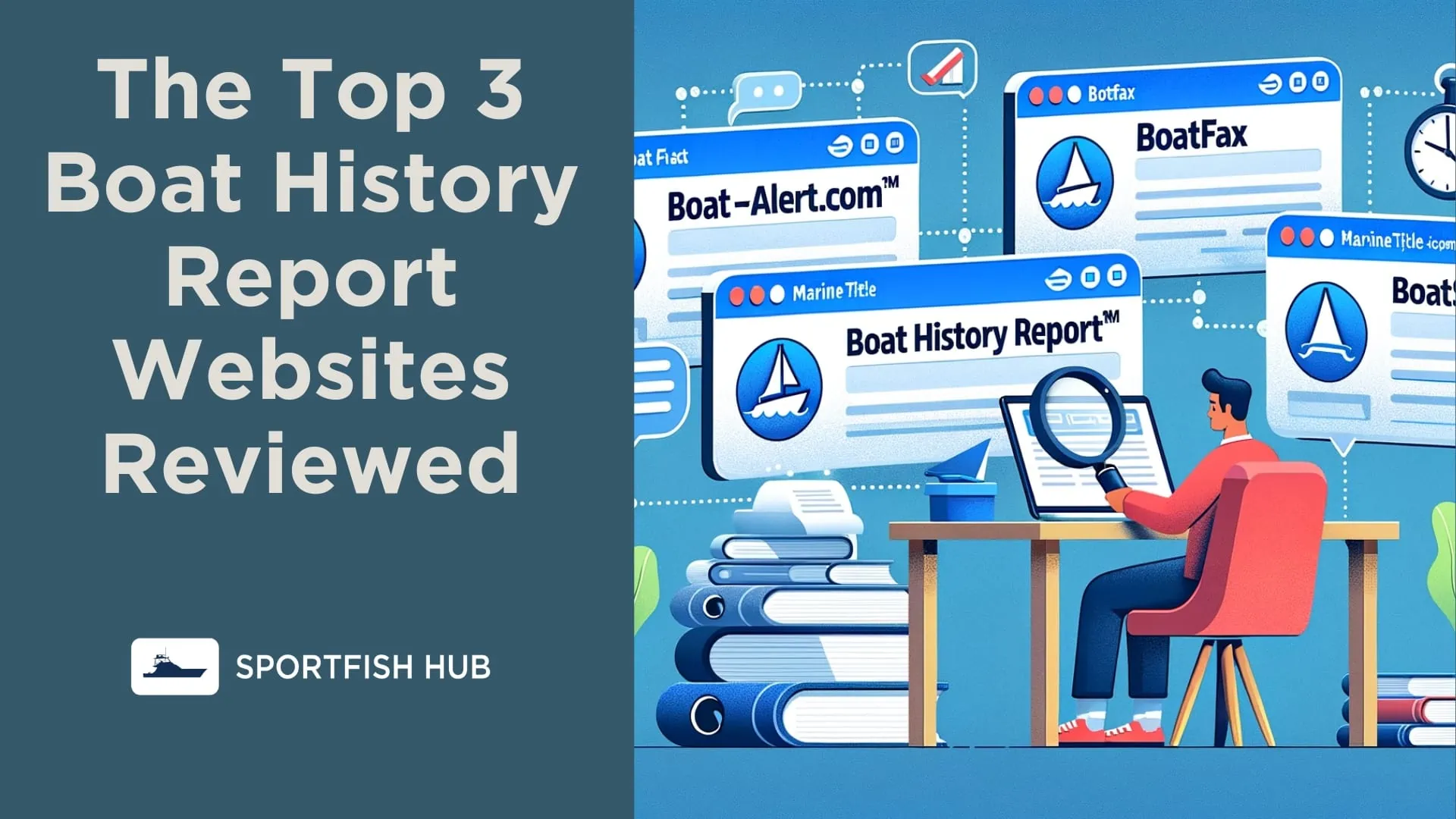Sea anchors and drogues are essential tools for boat owners who want to drop anchor at sea because unless you have thousands of feet of anchor line, the most you can hope to achieve in the way of anchoring is control and stability.
These devices work by creating drag on a vessel. Sea anchors are designed to stop the drift of a boat and keep its bow windward, and drogues are used to slow down a vessel in following seas.
This comprehensive guide will discuss the differences between sea anchors and drogues, their uses, and how to deploy and retrieve them effectively.
Table of Contents
- How to Anchor at Sea Video Tutorial
- The Impossibility of Anchoring in Deep Ocean Waters
- Sea Anchors vs. Drogues: The Key Differences
- Gear Requirements for Sea Anchors and Drogues
- How to Deploy a Sea Anchor or Drogue
- How to Retrieve a Sea Anchor or Drogue
- Using Sea Anchors: Small Boats vs. Big Boats
- Final Thoughts on Sea Anchors and Drogues
- Other Alternatives to Anchoring Offshore
- Unique Offshore Anchoring Locations
- Incorporating Additional Anchoring Tips and Terminology
How to Anchor at Sea Video Tutorial
The Impossibility of Anchoring in Deep Ocean Waters
When anchoring a boat at sea, it’s crucial to remember the relationship between water depth and anchor rode length.
Most anchors, like plow or fluke anchors, require a certain scope ratio (the ratio of anchor rode length to water depth) to ensure the anchor holds properly on the sea bed. The typical scope ratio is 7:1, meaning for every foot of water depth, you should have seven feet of anchor rode deployed.
Well, in 1,000 feet of water, that’s 7,000 feet of anchor line!
Furthermore, finding a suitable seabed (such as hard sand or soft mud) becomes increasingly difficult as water depth increases.
Sea Anchors vs. Drogues: The Key Differences
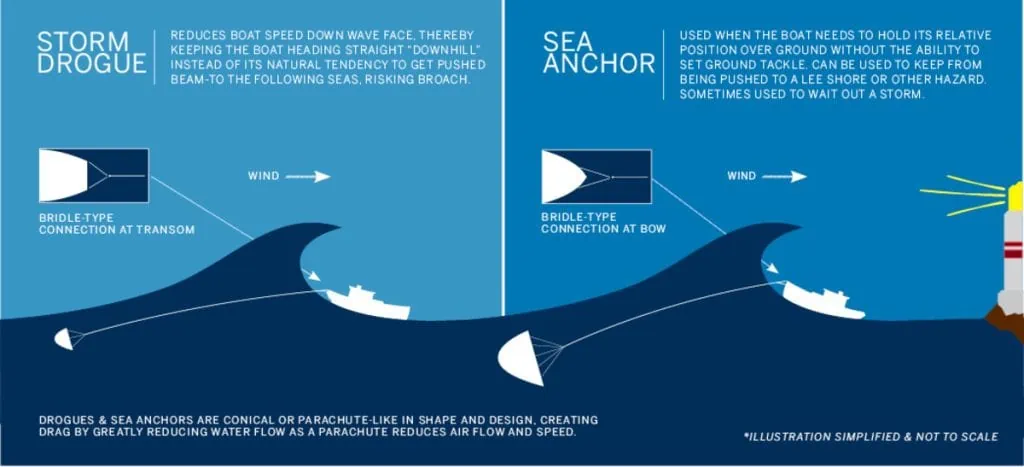
There are two main types of drag devices: sea anchors and drogues (Also referred to as sea brakes, parachute anchors, and drift socks). Although they both serve to create drag on a vessel, their designs and purposes are quite different.
Sea Anchor
A sea anchor, resembling a parachute made of fabric, is deployed from the bow and fastened to a bow cleat. Its purpose is to stop a vessel’s drift and keep its bow facing the wind and waves in rough seas. Sea anchors are usually larger than drogues typically used in open water when conventional ground anchors are not practical.
They play a crucial role in enduring storms or during emergencies involving power loss, as they prevent the boat from turning sideways to the waves or drifting off course. (They are also used in fishing)
Drogues
Drogues are cone-shaped devices released from the stern to slow down a vessel in following seas. Generally smaller than sea anchors, they help keep a boat’s stern facing the waves, which reduces your chances of surfing that can lead to broaching or pitchpoling.
Drogues can also serve as steering aids in situations involving power loss or rudder issues or to control drift speed when trolling without a motor.
Gear Requirements for Sea Anchors and Drogues
The tackle you need for deploying a sea anchor or drogue should be similar in size and strength to what you use for regular boat anchoring. Consider the following guidelines:
- Anchor rode (Anchor line): Carry 10 feet of rode for every foot of your boat’s length overall (LOA) to use with your sea anchor or drogue.
- Anchor chain: A length of chain up to 20% of the length of your rode can help achieve the best angle on the sea anchor or drogue and prevent chafe.
- Cleats: Use secure cleats with backing plates to handle the extra stress from the drag device.
- Rode material: Nylon line is recommended for its elasticity.
- Trip line and floats: Use a trip line and floats for anchor recovery. The trip line should be made of floating material, such as polypropylene, and have a 1/4 to 3/8 inch diameter.
- Swivel: Use a stainless steel swivel between the sea anchor or drogue and the rode to prevent twisting in the water.
- Chafe protection: Use chafe protection in the areas where rope is going to make contact with your boat.
How to Deploy a Sea Anchor or Drogue
Follow these steps to deploy a sea anchor or drogue safely:
- Confirm that your rode is untangled and prepared to unwind smoothly.
- Make sure all individuals maintain a safe distance to prevent any accidents involving the lines.
- Secure every part of the line using shackles or swivels, and enhance safety with the incorporation of seizing wire.
- Initiate the deployment with the trip line and floats, bearing in mind that the bow is for sea anchors and the stern for drogues. Allow the trip line to drift and clear.
- Gently toss the drift anchor into open water, away from any obstructions.
- As the vessel moves away from the anchor, release approximately 50 feet of rode and briefly secure it with a half turn on the cleat. Give the drift anchor a minute to fully open.
- While gradually releasing the remaining rode to reach the desired scope, ensure tension is maintained by snubbing when necessary.
- For optimal drift fishing in favorable conditions, a shorter scope is sufficient. Start with a 15-foot line for anchor opening, and then progressively release 10 feet at a time until a steady and comfortable tension is achieved.
- Attach your rode to the cleat or a pre-set bridle for multi-hulled vessels.
- Install chafe guards in any areas where protection for your lines is needed.
How to Retrieve a Sea Anchor or Drogue
Recovering your sea anchor or drogue can be straightforward when using a trip line, which is strongly advised. Adhere to these steps:
- Navigate towards your trip line float, ensuring you circle around to prevent entanglement with your rode or anchor. Utilize a boat hook to capture the float, similar to how you would with a mooring buoy.
- Pull the trip line. As the line connects to the peak of the cone or chute, reeling in this line drains the anchor of water, enabling you to effortlessly hoist it back onto the boat.
Using Sea Anchors: Small Boats vs. Big Boats
When it comes to using a sea anchor, the effectiveness of the anchor and the method in which you deploy it depends greatly on the size of your boat.
1. Size and Type of Sea Anchor
- Small boats: Require smaller sea anchors to avoid excessive drag that could compromise safety or damage the boat.
- Big boats: Require larger and stronger sea anchors to create drag and maintain stability effectively.
2. Deployment and Retrieval
- Small boats: The process might be more manageable by hand or with minimal equipment.
- Big boats: Deployment and retrieval may be more challenging due to the size, weight, and increased forces involved. A crew on a larger boat might need additional equipment, such as a winch, to help with the process.
3. Attachment Points and Bridle Configuration
- Small boats: Require basic attachment points and bridle configurations.
- Big boats: May require stronger attachment points and more robust hardware to handle the increased forces. The bridle configuration might also be more complex to distribute the load evenly.
4. Effect on Boat Behavior
- Small boats: More responsive to the drag created by a sea anchor.
- Big boats: Require more drag to achieve the same effect. The boat’s design and hull shape can influence how it interacts with the sea anchor and the resulting behavior.
5. Safety Considerations
- Small boats: May be more prone to capsizing or getting swamped by waves if the sea anchor is not properly deployed or sized.
- Big boats: May have more potential hazards, such as increased forces on the attachment points and the risk of entanglement with the sea anchor line.
Final Thoughts on Sea Anchors and Drogues
Having the right equipment for deploying a sea anchor or drogue is essential, but it’s not enough on its own.
Practice deploying and retrieving your sea anchor or drogue in favorable conditions from your boat several times before you need to use it in an emergency or challenging situation. Familiarity with the process will make it much easier to handle adverse conditions, ensuring you can effectively maintain control of your boat and keep it stable when it matters most.
Other Alternatives to Anchoring Offshore
Heaving-to (Sailboats)
Heaving-to is a technique used to slow a boat’s forward motion and maintain a relatively stable position in the water. This can be helpful when you need to take a break, wait for better weather conditions, or attend to tasks on board.
How to Heave-to
To heave-to, first adjust the sails to create a balance between the forces acting on the boat. On a sloop-rigged sailboat, this usually involves backing the jib (turning it so the wind pushes against its front side) and easing the main sail to reduce its driving force. Next, turn the boat’s bow into the wind and adjust the rudder to maintain the boat’s position. The boat should now be gently drifting, with its forward motion significantly slowed.
Unique Offshore Anchoring Locations
Minerva Reefs
The Minerva Reefs are a pair of submerged atolls in the South Pacific Ocean, located between Fiji and New Zealand. These unique offshore anchoring spots offer temporary refuge for boats crossing the South Pacific. Although the reefs are mostly submerged, they provide a relatively shallow area for anchoring in an otherwise deep ocean environment.
Great Bahamas Bank
The Great Bahamas Bank is a vast, shallow carbonate platform located to the west of the Bahamian archipelago. This unique offshore anchoring location offers extensive exploration, fishing, and diving opportunities. While the bank’s shallow water provides numerous anchoring spots, it’s important to be cautious of the numerous coral heads and other navigational hazards.
Incorporating Additional Anchoring Tips and Terminology
While this article focuses on sea anchors, it is worth noting other anchoring methods and tips that may be useful for boat owners in various situations. Here are some essential points to consider:
- Plow anchors and fluke anchors are commonly used for regular anchoring, offering excellent holding power in a variety of sea bed conditions, including soft mud and hard sand.
- When anchoring in a crowded anchorage, be mindful of your position relative to other boats and ensure you have enough swinging room.
- To drop the anchor, slowly lower it from the bow roller instead of throwing it overboard, which can cause the anchor to foul.
- Be aware of water depth and use enough scope to ensure your anchor holds and offers the best possible holding power.
- Consider deploying a larger anchor or a storm anchor in high winds or stormy conditions for added security.

